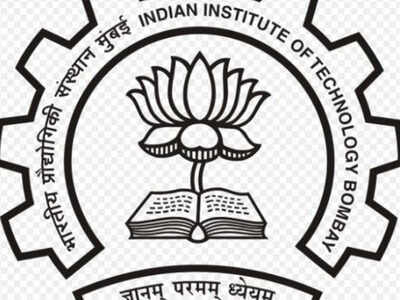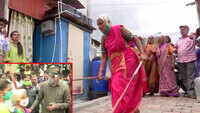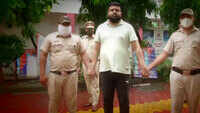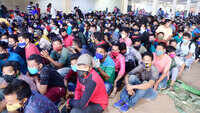
PANAJI: The Indian Institute of Technology (IIT), Bombay, has asked the Goa State Pollution Control Board (GSPCB) for the Continuous Ambient Air Quality Monitoring System (CAAQMS) and the National Ambient Air Quality Monitoring Programme (NAMP) data of six locations from the port town to assess the air pollution at Vasco during the lockdown.
IIT-Bombay, which has been tasked with conducting a source appropriation study at Vasco following allegations of coal pollution in the town, requires data on movement of rakes, trucks and ships. The board has to submit the information for the period January to June 2019 and for May 2020.
The IIT’s environmental science and engineering department (CESE), in a letter to the board, said that data across six stations is needed in order to assess the effect of lockdown on air pollution for the period. Similar data for the comparative period from previous years is also required from the same stations, the IIT told GSPCB.
The institute has completed data collection for the second phase of the study and chemical analysis is in progress.
Speaking to TOI, chairman of GSPCB, Ganesh Shetgaonkar, had said that IIT-Bombay has submitted the interim report after completing the first phase of study.
The final report will indicate the exact quantity of coal, bauxite and other dust particles present in the air.
The source appropriation study is aimed at allowing the government to determine the reason behind the air pollution in the town.
The first phase report stated that coal is not the only mineral behind the air pollution in the town. A senior GSPCB officer said that the interim report was not exactly to pinpoint the reason with regards to pollution in Vasco but the second phase study will give details about the source of pollution.
The first phase began in April and was completed on May 2018. The Mormugao Port Trust (MPT) will bear the cost of the entire study, which has been pegged at over Rs 94 lakh, a senior GSPCB officer had said.
Identification of sampling locations, monitoring ambient air quality, and locating pollution sources are part of the study’s scope, and will be carried out as per guidelines of the central pollution control board.
IIT-Bombay, which has been tasked with conducting a source appropriation study at Vasco following allegations of coal pollution in the town, requires data on movement of rakes, trucks and ships. The board has to submit the information for the period January to June 2019 and for May 2020.
The IIT’s environmental science and engineering department (CESE), in a letter to the board, said that data across six stations is needed in order to assess the effect of lockdown on air pollution for the period. Similar data for the comparative period from previous years is also required from the same stations, the IIT told GSPCB.
The institute has completed data collection for the second phase of the study and chemical analysis is in progress.
Speaking to TOI, chairman of GSPCB, Ganesh Shetgaonkar, had said that IIT-Bombay has submitted the interim report after completing the first phase of study.
The final report will indicate the exact quantity of coal, bauxite and other dust particles present in the air.
The source appropriation study is aimed at allowing the government to determine the reason behind the air pollution in the town.
The first phase report stated that coal is not the only mineral behind the air pollution in the town. A senior GSPCB officer said that the interim report was not exactly to pinpoint the reason with regards to pollution in Vasco but the second phase study will give details about the source of pollution.
The first phase began in April and was completed on May 2018. The Mormugao Port Trust (MPT) will bear the cost of the entire study, which has been pegged at over Rs 94 lakh, a senior GSPCB officer had said.
Identification of sampling locations, monitoring ambient air quality, and locating pollution sources are part of the study’s scope, and will be carried out as per guidelines of the central pollution control board.
Quick Links
Kerala Coronavirus Helpline NumberHaryana Coronavirus Helpline NumberUP Coronavirus Helpline NumberBareilly NewsBhopal NewsCoronavirus in DelhiCoronavirus in HyderabadCoronavirus in IndiaCoronavirus symptomsCoronavirusRajasthan Coronavirus Helpline NumberAditya ThackerayShiv SenaFire in MumbaiAP Coronavirus Helpline NumberArvind KejriwalJammu Kashmir Coronavirus Helpline NumberSrinagar encounter
Get the app








